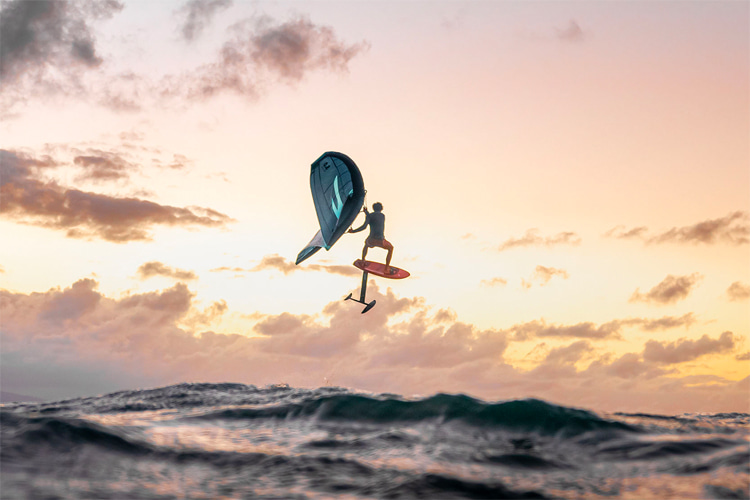For many top pros, the 360 is just that gateway move. Not only does it look and feel exciting, but it sets you up for a lot of progression moving forward.
The 360 is one of the current heat-winning maneuvers and often the first air rotation trick that most pro riders learn.
As the first person to land a double backflip on a wing, it was only appropriate that we sit down with one of the masters of the sport to learn the first steps for really advanced wing-foiling progression.
Titouan Galea has wowed the wing world with his continual progression of the sport and, over the years, has won several GWA Wingfoil World Tour titles.
Here are Galea's top tips for learning the wind foiling 360.
What can someone learn before this that will really help?
It's important to know how to jump really well before trying a 360. Proper jump technique will set the rider up for a successful 360 - this is crucial to learn before attempting this trick.
By proper jumping, I mean knowing how to jump without using the wing much but instead utilizing the pop off the foil much more.
What gear and conditions are best for this trick?
To learn a 360, it's easiest to try on bigger boards and smaller wings. The size of the foil actually doesn't matter very much.
You are instead looking for a larger surface to land on so that you have the most balance.
You also want to use a small wing so that you can rotate quickly and learn without having to muscle the wing around too much.
The best conditions for learning are when you are perfectly powered. You don't want to be too powered. Otherwise, the wing will bother you too much while executing the trick.
Flatwater is recommended, as then you can set yourself up for a proper take-off without worrying about waves and troughs or having to find the perfect ramp.
What's the step-by-step process for learning a 360?
It's important to note that everyone is doing the 360 in a different way, so the rider should explore what will work best for them.
Here's how I do it:
- Generate good speed. If you're in waves, spotting a kicker will also help;
- Once you're ready to pop, rely primarily on the foil to send yourself out of the water. Try not to pull on your backhand very much - keep the wing disengaged;
- As you release from the water, start to rotate your upper body first. This is the most important part of the trick;
- As you start to rotate, you can then start to move the wing against the wind. Note: I do this much differently from most people. My wing stays really low so as not to catch the wind very much;
- When the wing catches the wind, pull your backhand in as much as possible;
- As you come around to land, watch where you're going. At first, the board won't be aligned perfectly, but the more you do it, the better you'll get;
Can you highlight a few common problems when learning it and how to fix them?
The most common problem when learning is getting the wing caught. You really have to force the wing through the wind.
The most crucial moment for me is to not let the wind catch the wing when I pull it against the wind.
To prevent this, you need to keep rotating the wing either flat or against the wind. Keep your arms in front of your eyes or lower when rotating.
If you rotate the wing while having your arms up, the wing will catch the wind, and you will be in trouble.
